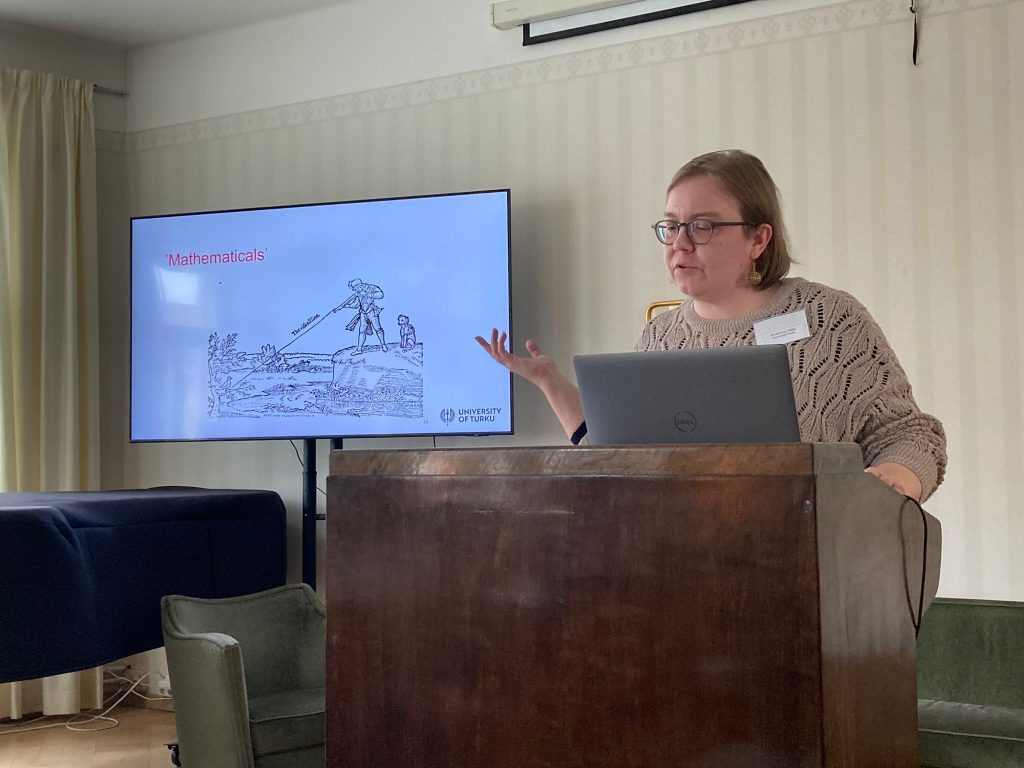As an EModGraL post-doc, I have lately been working on research into the visual devices of English sixteenth-century military manuals. I am interested in the information transmission devices of these works, the arrival of different types of visual tools to the English print, and the availability of these visuals to the English readership. The material is very fruitful, and during the last few months, while working on an article on the topic, I have published a blog post and held several talks on the various side tracks the materials inspired.
The blog post, titled Renaissance diagrammatics and the English Tartaglia, was published in Ramus Virens, a medieval studies blog of University of Jyväskylä. In the blog, I explore the practices of reproduction of Tartaglia’s image-diagrams in the 1588 English translation, focusing especially on the copying of the diagrammatic sections of the diagram-images.

I also spoke in two events in the spring. In January, I participated in 1500- ja 1600-lukujen tutkimuksen päivät in Oulu, organised by the Uuden ajan tutkimuksen verkosto. My presentation, titled “Cyprian Lucar, Niccolò Tartaglia ja ihmiskeho soveltavan matematiikan visualisaatioissa” (Cyprian Lucar, Niccolò Tartaglia, and the use of the human body in visualizations of applied mathematics), focused on the use of human figure as a part of geometric objects in the English translation of Tartaglia’s Quesiti et inventioni diverse.
In March, I spoke at the Humboldt Kolleg, an event intended for the dissemination of information across disciplines organized by Alexander-von-Humboldt-Club Finnland. The presentation, titled “Graphicacy and the Military Revolution in sixteenth-century England” discussed the influence – or the lack thereof – of the military revolution on the practices of military publishing in sixteenth-century England.
🖝 Remember to keep an eye out for the call for papers for the EModGraL conference! The CfP will be out later this month!
Text: Sirkku Ruokkeinen | Photo: Antti Ijäs